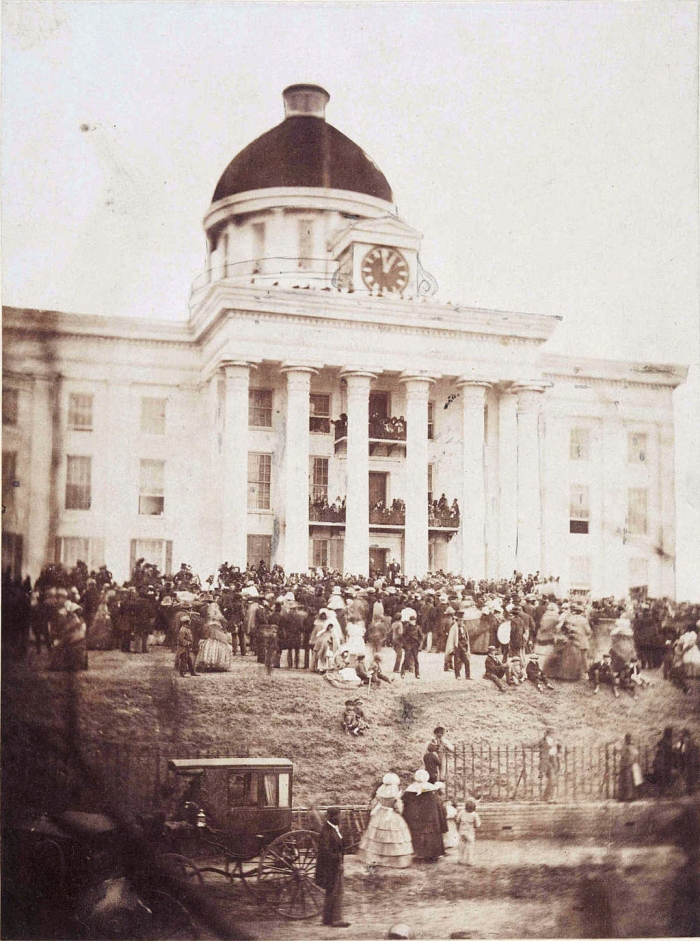Although the Constitution of the Confederate States of America (1861) largely follows the outline of the U.S. Constitution, it differs from it in a number of ways.
The Confederacy’s approach to the Bill of Rights, and specifically the First Amendment, is noteworthy. The preamble of its constitution begins, “We, the People of the Confederate States, each State acting in its sovereign and independent character… ,” and includes a reference, absent in the U.S. Constitution, to “the favor and guidance of Almighty God.” Article 6, however, maintains the U.S. Constitution’s prohibition of religious test oaths.
The framers of the Confederate constitution adopted the First Amendment in full. As with other amendments that the new document incorporated, however, the First Amendment is invoked within the main body of the text, rather than separately, as an appendix.
Confederate Constitution did not extend “bill of rights” to state actions
The provisions of the first eight amendments of the U.S. Constitution comprise paragraphs 12 through 19 under Article 1, section 9, of the Confederate document. As in the U.S. Constitution, this section specifically limits the authority of Congress. By placing this prohibition within Article 1, section 9, the Confederate constitution effectively reiterated the Supreme Court decision in Barron v. Baltimore (1833), limiting the scope of these prohibitions to federal government, which would later be repudiated by the ratification of the14th Amendment and subsequent court decisions.
The Confederate constitution has the 9th and 10th Amendments as its Article 6, which covers miscellaneous matters. It modifies the 9th Amendment to specify that the “enumeration, in the Constitution, of certain rights, shall not be construed to deny or disparage others retained by the people of the several States” (emphasis added to highlight the difference).
Although the Confederate constitution permits the establishment of a supreme court, the Confederacy never created one. The Confederacy’s failure to do so demonstrates its leaders’ suspicion of any mechanism through which states might be subordinate to federal powers (DeRosa 1991: 77). The absence of such a court makes it difficult to know how interpretations of the elements of the First Amendment might, over time, have varied from those of the U.S. Supreme Court.
Confederate Constitution explicitly supported slavery
The Confederate Constitution made alterations of individual rights easier than under the U.S. Constitution. Although it provided no formal way for the legislature to propose amendments, only three states (rather than two-thirds) were needed to request a constitutional convention to propose such amendments, which would have required ratification by two-thirds (rather than three-fourths) of the states. The Confederate constitution also includes a nonrenewable six-year term for the president and a line-item veto.
It explicitly supports slavery and reasserts the principle of state’s rights that had dominated under the Articles of Confederation (1781–1789).
The Committee of Twelve had drafted the constitution, and a convention held in Montgomery, Alabama, debated and proposed it in March 1861. The Confederate Congress and the legislatures of the seceding states subsequently approved it.
John Vile is professor of political science and dean of the Honors College at Middle Tennessee State University. He is co-editor of the Encyclopedia of the First Amendment. This article was originally published in 2009.

